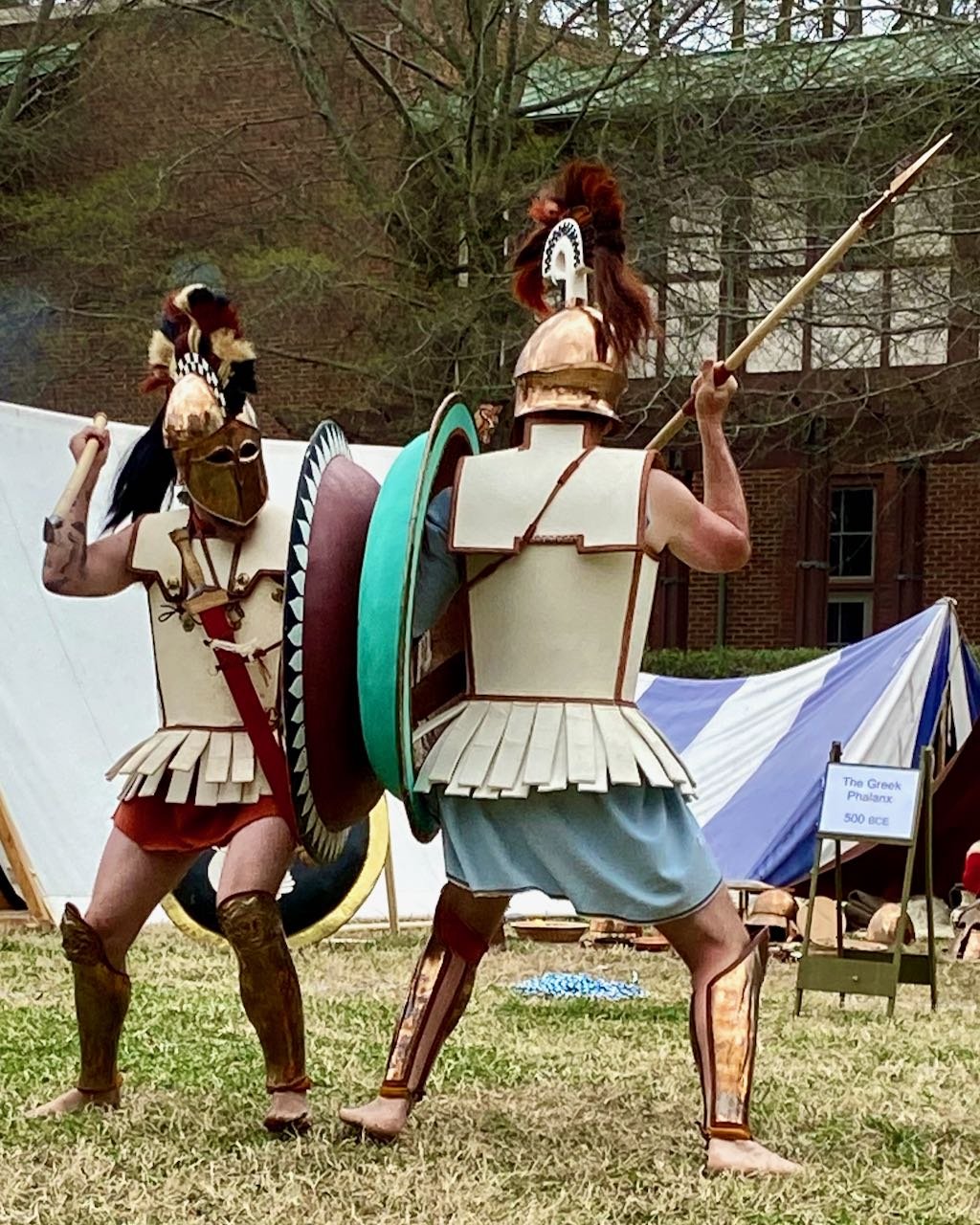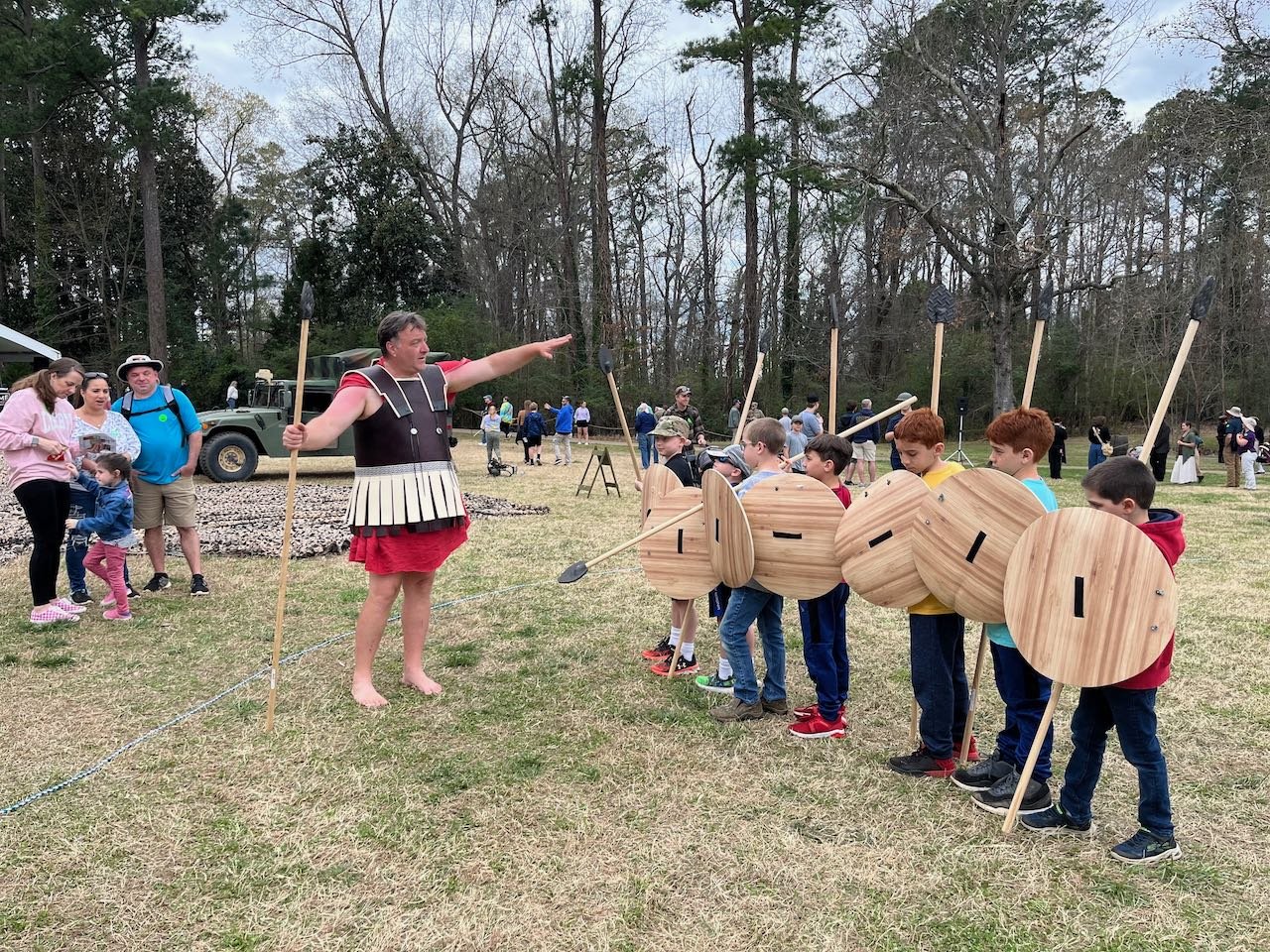Our Mission
By Andrew Yamato
The Greek Phalanx is an award-winning association of reenactors, historians, authors, curators, and craftsmen with a common passion for Ancient Greek military history, focusing on the equipment and experience of the hoplite (man-at-arms) heavy infantry at the core of all armies fielded by the Ancient Greek poleis (city states). Based on the East Coast of the United States, we attend a variety of educational and immersive events in North America and Europe.
We have chosen not to explicitly identify as hoplites of any specific polis to make the point that hoplites were a Panhellenic phenomenon, and to keep our ranks open to impressions from all poleis. To that end, we maintain an informal, non-hierarchical structure and are always pleased to accept new members and/or join forces with other reenactment groups. Hoplite reenactors are thin on the ground — we should all stick together!
Reenacting antiquity is a different hobby than reenacting other eras with harder and more plentiful evidence. The relative scarcity of physical artifacts and the limited textual corpus means that informed interpretation, deduction, and speculation necessarily factor into any cohesive vision of antiquity, even at the highest academic levels. Needless to say, this generates endless disagreement and controversy, but the debate itself is dynamic and invigorating — far from the dry and moribund discipline, one might expect of a subject that has been studied for over two and a half millennia.
One of the most interesting recent developments in the scholarly discussion of ancient Greek warfare has been the increasing credibility and citation of serious reenactors like ourselves, whose efforts at “experimental archaeology” through accurate reconstructions of the hoplite’s panoplia (arms and armor) and tactics are confirming/debunking/transforming many widely-held theories about how Greeks fought, effectively earning a place at the “grownups’ table” of professional historians.
This is precisely the investigative spirit in which The Greek Phalanx seeks to present itself at “living history” events where we educate the public about Ancient Greece, explain our panoplies, and test our theories about how it was used. Activities include hoplomachia (combat sparring) with padded sparring weapons, ballistics tests of authentically forged “live steel” weapons on various forms of authentically reconstructed shields and armor, and range-testing of missile weapons used by non-hoplite Greek light infantry (including javelins, slings, arrows, and an early Greek crossbow known as a gastraphetes). The centerpiece of our demonstration is our interpretation of an armed “Pyrrhic dance” which many ancient sources attest were used to train hoplites for battle, and which may partially survive in traditional Greek dances still performed today.
The very physical nature of hoplite combat, combined with the relatively low level of training and discipline among historical hoplites, means that audience participation in our activities is not only an engaging interactive experience for them, but a truly instructional experience for us as well. By equipping volunteers with full-sized, plastic replica shields, we can effectively double our own numbers to more effectively model how densely packed phalanxes actually functioned in battle. The results of such experiments have been presented at such forums as Harvard University’s Center for Hellenic Studies and are core concepts in books and articles written by our members.
Our panoplies represent the evolution of hoplite equipment throughout the Archaic and Classical era, and were either made by us or commissioned from artisans around the world. Our static displays present the standard diet of hoplites on campaign and routine implements of daily life and religion. Rather than simply being the lifeless “junk on a bunk” too often presented by reenactors, the purpose of these artifacts is to support active interpretation and engagement with the public, for which we have real enthusiasm and long experience.
Reenacting at its best is a highly collaborative hobby, and The Greek Phalanx is indebted to many of our fellow enthusiasts, especially the knowledgable contributors on the International Hoplite Discussion Group on Facebook. I’d like to specifically thank Matthew Amt, whose hoplite website has been the gateway to the hobby for so many of us; Giannis Kadoglou, whose splendidly reconstructed panoply was the inspiration for much of my own; and our own Dr. Paul Bardunias, whose “experimental archaeology” approach to hoplite warfare continues to bridge the gap between reenacting and academia, enriching both.




